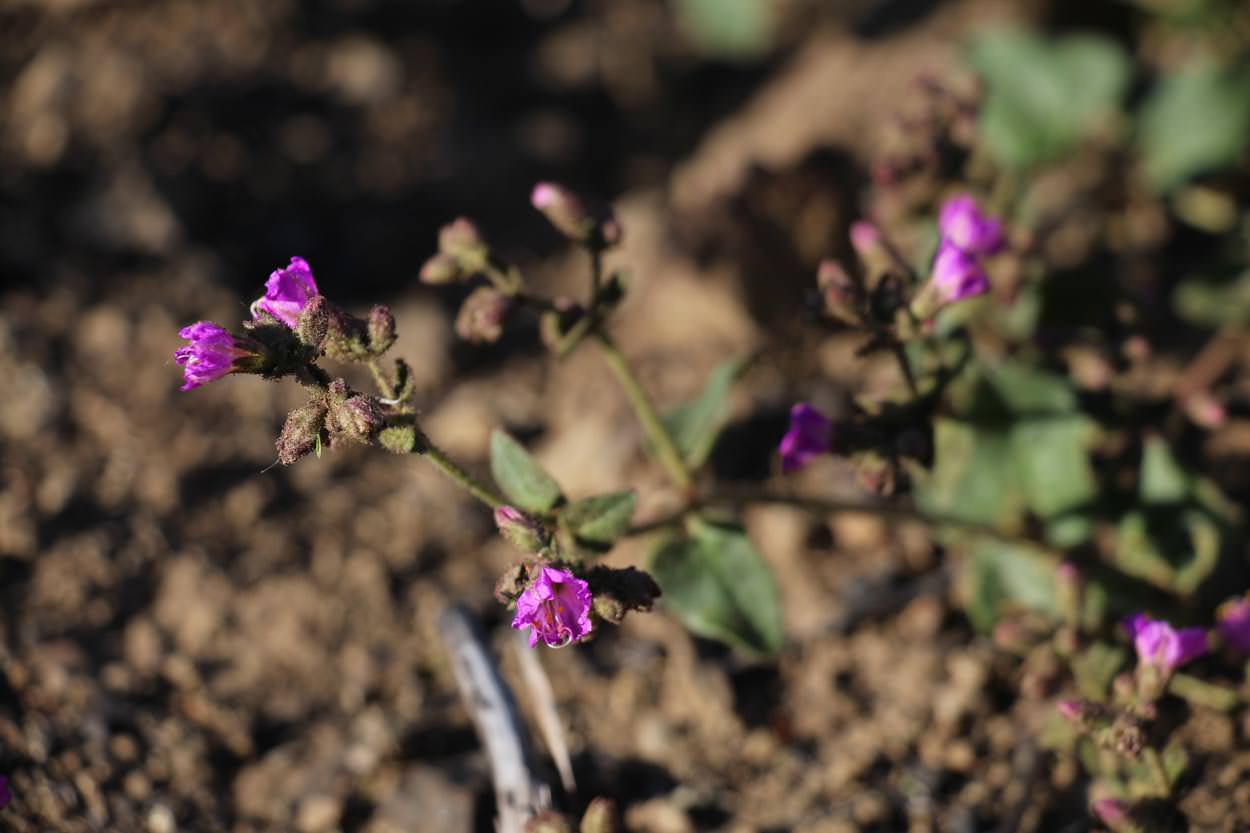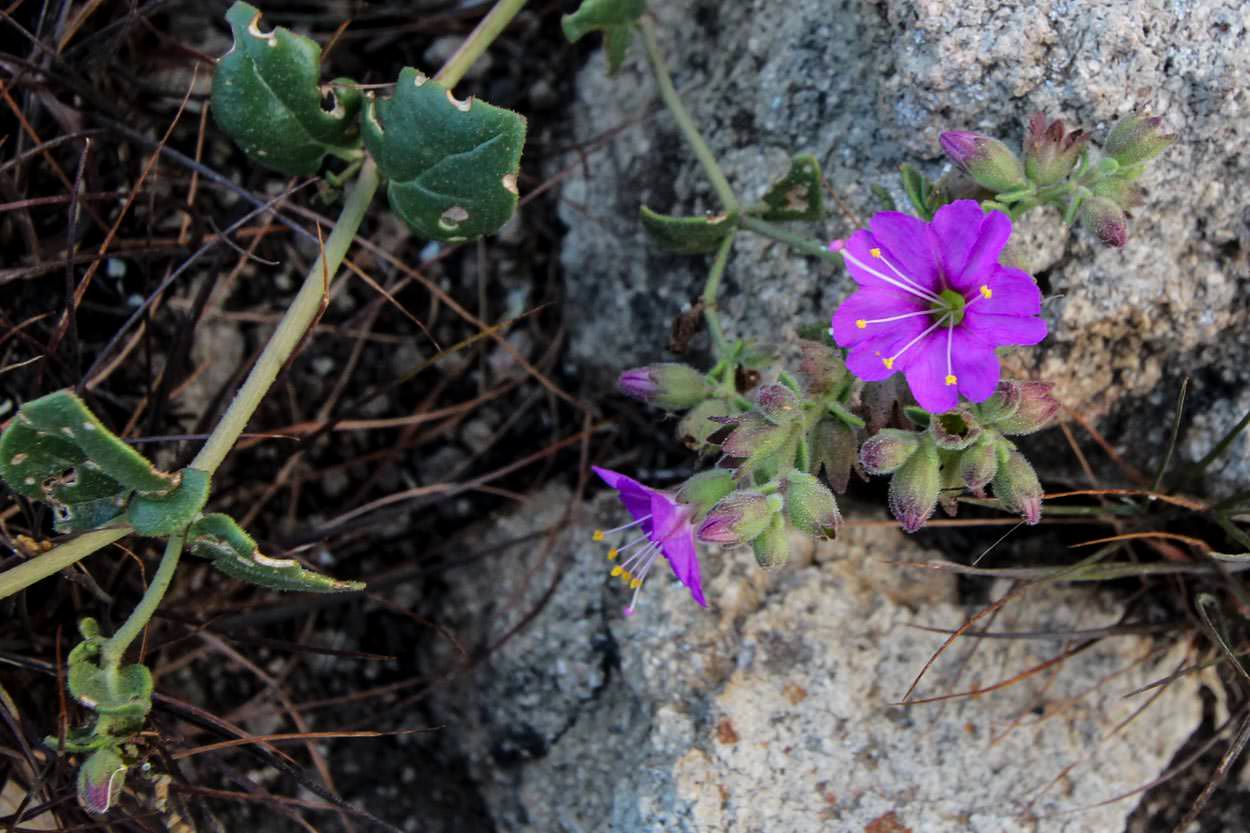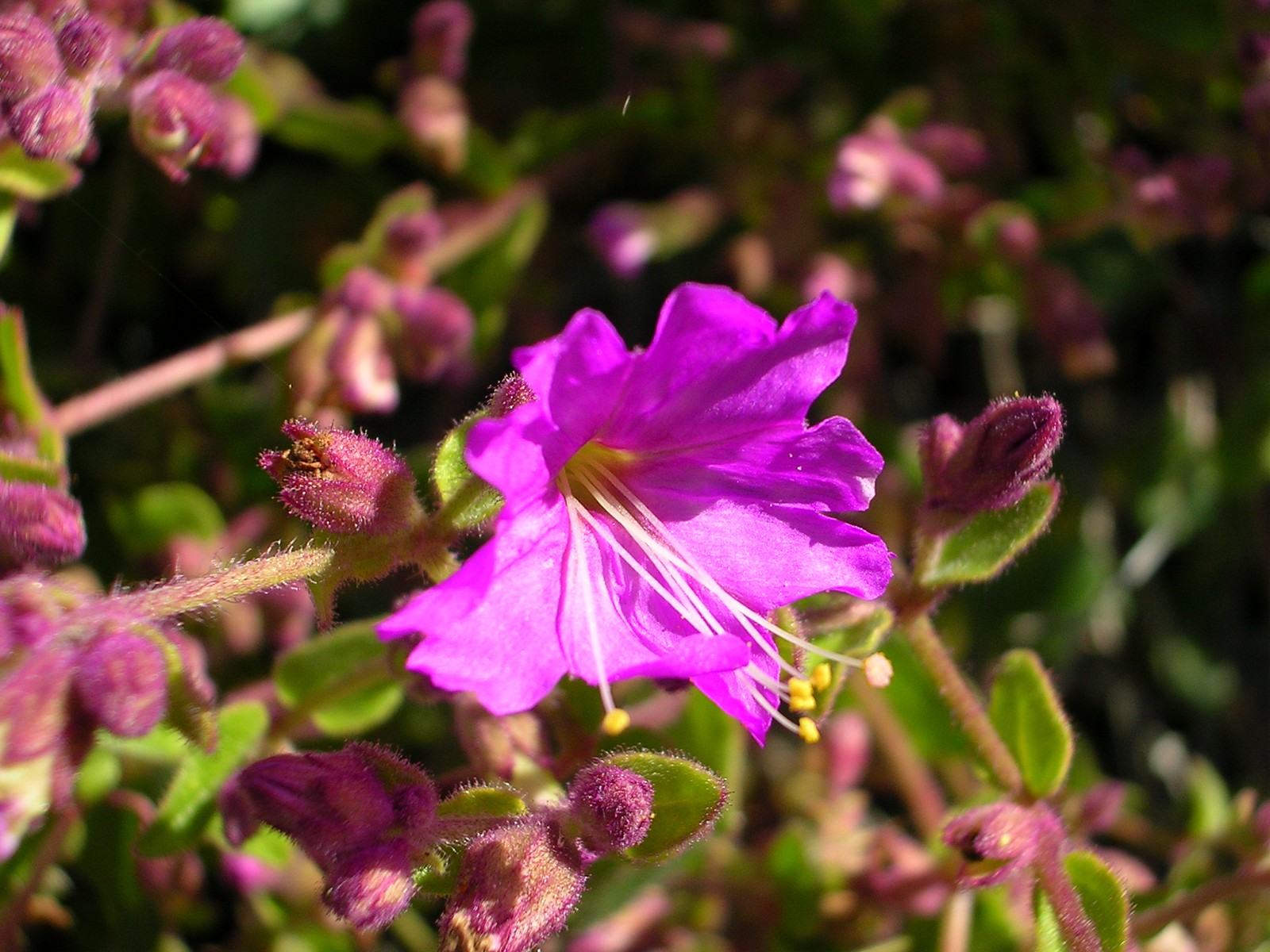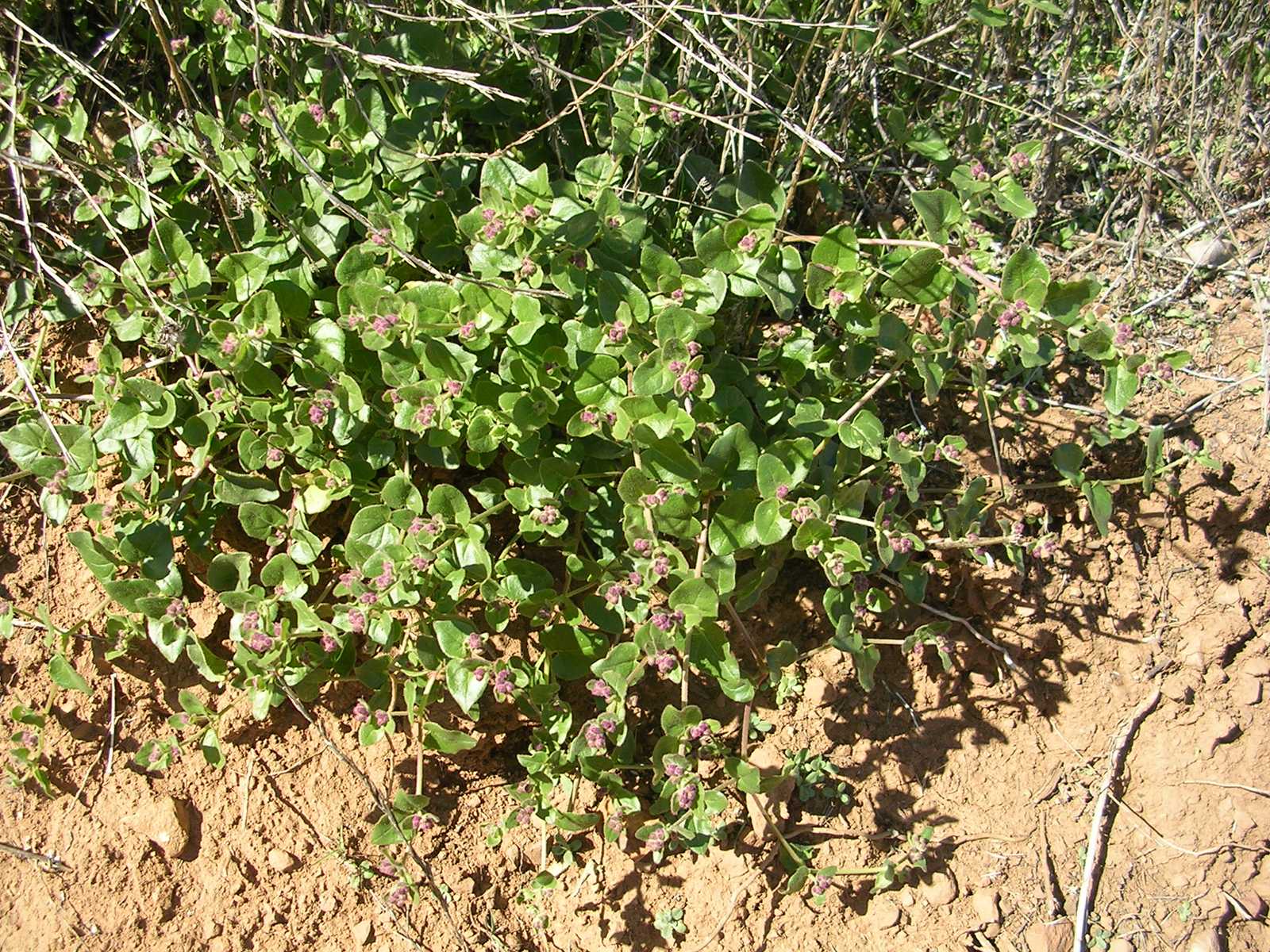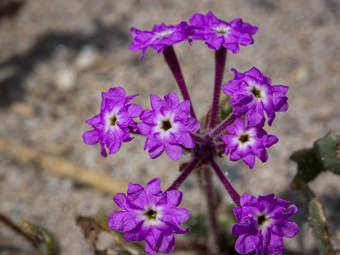Wishbone Bush
- Mirabilis laevis
| Common Name(s): | Wishbone Bush |
| Scientific Name: | Mirabilis laevis |
| Family: | Nyctaginaceae (Four O'Clock) |
| Plant Type: | Perennial |
| Size: | up to 18 inches |
| Habitat: | Chaparral and Coastal Sage Scrub |
| Blooms: | November to May |
| Fire Response: | Germinate from Seed |
Wishbone Bush is a plant with a low-growing, many-branched, matted appearance. Its magenta flowers can be found blooming from December to June. It gets its common name from the appearance of its stems, which fork and resemble poultry wishbones. This is especially evident later in the warm season when leaves have fallen off and the plant is going dormant.
The flowers are under an inch in diameter and pink-to-purple in color, with yellow-orange stamens. What appears to be 10 petals on each flower is really 5 2-parted sepals. A defining characteristic of the Four O'Clock family is this lack of petals. Leaves are opposite along stems and are oval or heart-shaped, about an inch in diameter. The stems are fairly woody towards the bottom but a bit more fragile on top.
These plants are pollinated primarily at night, and the flowers open up in mid-afternoon. These two characteristics earn it its family name. The genus name Mirabilis means "miraculous". The species name laevis is a term that means smoothness, i.e. free from hairs.
Contributed by Liz Baumann
Featured Plants in the Nyctaginaceae (Four O'Clock) Family:
Last modified: May 17 2024 08:08:17.
Number of Images: 14
Image Size Total: 3,006,419
References:
Wildflowers of the Santa Monica Mountains, by Milt McAuleyFlowering Plants: The Santa Monica Mountains, Coastal and Chaparral Regions of Southern California, by Nancy Dale
Chumash Ethnobotany: Plant Knowledge Among the Chumash People, by Jan Timbrook
Leaf Shapes Primer - Botanical Terms for Leaves: - Link

